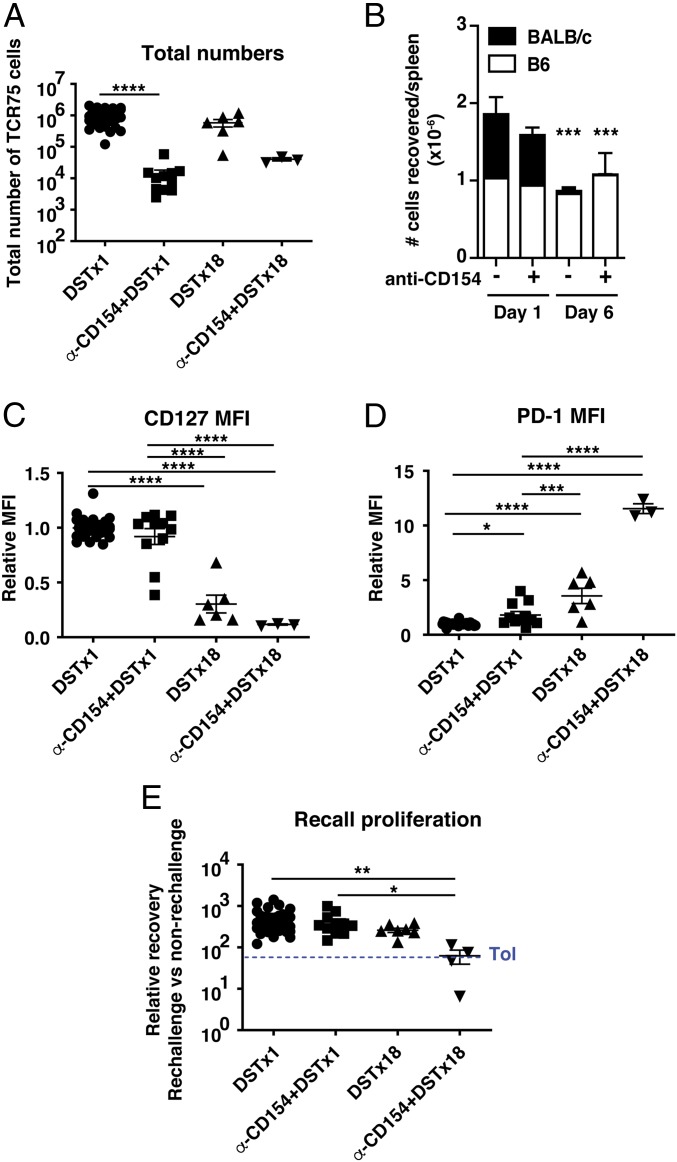Fig. 2.
The combination of costimulation blockade and chronic antigen exposure results in impaired recall proliferation. C57BL/6 mice were seeded with TCR75 cells (105) on d(−1) and immunized with either a single injection of DST on d0 ± anti-CD154 on d0, d7, and d14 (DST×1 and α-CD154 + DST×1), or 18 doses of DST administered every other day for the duration of the experiment ± anti-CD154 on d0, d7, and d14 (DST×18 and α-CD154 + DST×18). (A) Total numbers of TCR75 cells isolated from spleen and lymph nodes on d35 posttransfer. DST×1 n = 35, α-CD154 + DST×1 n = 11, DST×18 n = 6, α-CD154 + DST×18 n = 3. (B) BALB/c (CD45.2/.2) and B6 (CD45.1/.1 or CD45.1/.2) splenocytes were injected in an equal ratio into B6 (CD45.1/.2 or CD45.1/.1) mice ± anti-CD154 on d0 and the numbers of transferred cells in the spleen were quantified 1 or 6 d later. The d1 group of mice (@) did not have seeded TCR75 cells. d1: DST n = 4; α-CD154 + DST n = 4; d6: DST n = 4; α-CD154 + DST n = 3. (C and D) MFI of CD127 and PD-1 on TCR75 cells isolated from spleen and lymph nodes on d35. Values were normalized to DST only (MFI of DST group = 1). (E) TCR75 cells sorted from d35 primary hosts were pooled by group and adoptively transferred into new naïve mice (secondary hosts). Challenge and analysis as in Fig. 1F. The mean of the tolerant group in Fig. 1F is shown as a dashed blue line for reference. DST×1 n = 43, α-CD154 + DST×1 n = 11, DST×18 n = 7, α-CD154 + DST×18 n = 4. Data from the first 3 groups were pooled from 2 to 11 independent experiments. Mean values were compared by Kruskal–Wallis with Dunn’s correction for multiple pairwise comparisons (A and C–E) and by 2-way ANOVA with Bonferroni posttests (B). *P < 0.05; **P < 0.01; ***P < 0.001; ****P < 0.0001.

